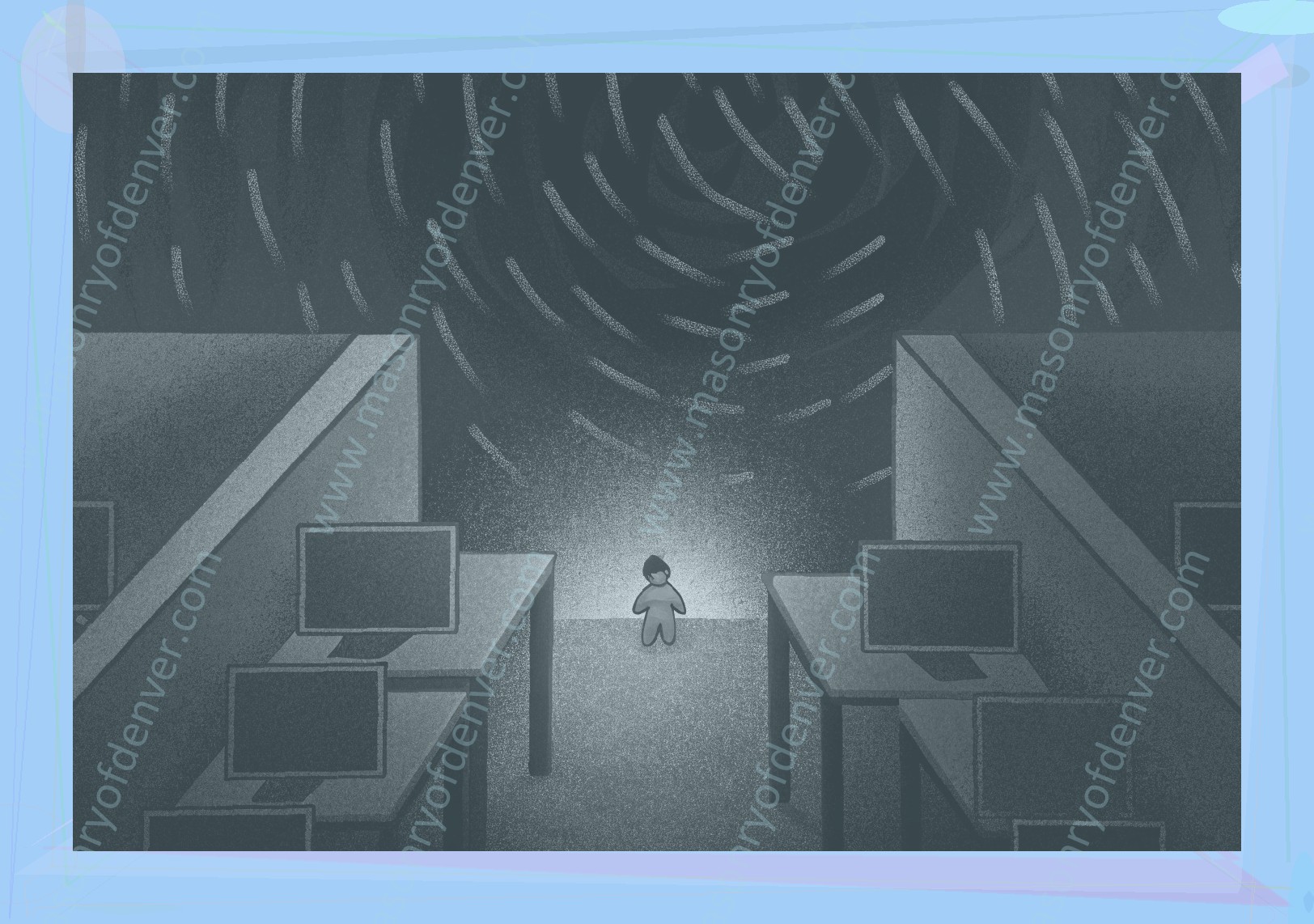What Is Verbal Harassment
Verbal harassment is an unwelcome or hostile verbal act towards a victim, that is derogatory, threatening, or offensive, and frequently takes the form of name-calling, threats, or slurs. It is important to note that certain language can be inherently offensive even if the victim does not consider it to be harassment in a particular instance. Behavior does not need to occur in the context of a continuing pattern in order to qualify as harassment, and can include any repeated inappropriate behavior, whether it is verbal or otherwise. For example, if an employer has a policy against bringing in food for employees, merely stating such a policy would not constitute verbal harassment. On the other hand, if the employer then proceeds to ridicule the employees bringing in food with a lengthy and repeated diatribe, reprimands them, or otherwise utilizes a supercilious or menacing tone, verbal harassment may have occurred. Context is important in assessing what constitutes harassment. A battery of insults can easily cross the line into harassment. A single derogatory comment, even if non-sexual , may create a hostile environment in it persists and becomes part of the ‘atmosphere’ of the workplace. Even though the California Supreme Court has ruled that a one-time incident of sexual harassment may not create a hostile environment, it has not held that a single incident of non-sexual harassment cannot create such an environment. Thus, one severely hostile incident could create a hostile work environment claim even if the sexual harassment claim is not viable. Repetition and a pattern is not necessary to constitute harassment. Harassment can occur on a single occasion. For instance, suppose a Boss (who is well aware that a co-worker has a disability) repeatedly yells out perverse jokes at a loud volume in front of the co-worker in question. In such a case, the co-worker may have a viable claim for harassment, even if it only happened once. But, if the Boss tends to exhibit a pattern of such behavior and has demonstrated a pattern of targeting disabled co-workers, using the example above, this will obviously become a larger issue, and will likely strengthen the harassment claim.
Legal Recourse for Verbal Harassment
The legal protections for verbal harassment are numerous, thanks to federal regulations and state statutes. At the federal level, Title VII of the Civil Rights Act of 1964 (42 U.S.C. §2000e) protects individuals from harassment based on pregnancy, age, color, race, religion, sex, or national origin. It indicates that: 29 CFR §1604.11(a) notes that sexual harassment includes "unwelcome sexual advances, requests for sexual favors, and other verbal or physical conduct of a sexual nature", and that such actions constitute discrimination if they create an abusive working environment, or if submission to the conduct is used as a basis for employment decisions. It explains that individuals who were discriminated against may sue to obtain evidentiary remedies (43 U.S.C. §2000 e-5), including hiring, reinstatement, promotion, back pay, front pay, and compensatory and punitive damages (42 U.S.C. §1981a). All states have laws regarding verbal harassment which often define harassment broadly, but some focus on certain specific aspects of the behavior. For example, sex harassment laws do not necessarily protect individuals who object to such unwanted conduct, but instead protect those subjected to such conduct. Thus, in New Jersey, harassment is prohibited if it is of a type that would "unreasonably offend a reasonable person of the same or different gender, with whom the victim is not in a social relationship." (N.J. Stat. Ann. §10:5-12(g)). With regards to race harassment, the law in Minnesota clarifies that employees do not have to complain directly to the harasser in order to have the conduct be considered offensive and hostile.
Verbal Harassment in the Workplace
Verbal harassment is not limited to sexual harassment, but anything that violates dignity and self-esteem for anything not associated with a job requirement for an employee. It is an attack on who the person is, or on something that person considers important to their identity. These attacks are delivered verbally in a variety of ways, from name calling to violence. Verbal harassment that is accompanied by physical damage to the reputation also falls under the verbal harassment category. Verbal harassment in the workplace may involve arguing, teasing, complaining, sneering, shouting, yelling, complaining, swearing, foul language, humiliating, deriding, belittling, disparaging, demeaning, insulting, or verbally assaulting. Any behavior which conveys these attitudes is harassment, even if the actual words do not come out in the form of "you." Harassment can include yelling or arguments in passing that the target overhears. There is a general misconception that the criteria for identifying verbal harassment is high, but the law does not require anything more than "more than a few isolated episodes" for a hostile work environment. "[M]ore than a few isolated episodes" can be one incident, if it is egregious. Courts look primarily at the actual words used and how a reasonable target of the remarks interpreted them. The person doing the corralling is still liable for actions of others taken because of their harassment, if there was any anticipation that their remarks would be followed by someone else’s action or inaction, done to the target of the harassment. When an employer learns, or should have learned, that someone in the workplace is being verbally harassed, it has a duty to intervene. The consequences for failing to step up include vicarious liability for actions taken by the harasser, and litigation for damages. That means that they have a duty to create a harassment-free workplace, investigate if a complaint comes to them, and investigate if they learn of any workplace harassment through a "reasonable person" standard (meaning, it should catch anyone’s attention that the offensive behavior is taking place). The investigation should be immediate and thorough. Once they learn of any danger, "they must take immediate and appropriate action to stop it." They must then take appropriate steps to ensure that no further verbal harassment takes place.
Legal Repercussions for Verbal Harassment
Those who are found guilty of verbal harassment may face civil penalties or even legal action. According to the California Department of Fair Employment and Housing (DFEH), "California law broadly prohibits harassment that is sexual in nature, including unwelcome sexual advances, requests for sexual favors, verbal or physical harassment, and sexual assault. It is unlawful for an employer to harass an employee for any of the following reasons: sex, sexual orientation, age, race, religious creed, disability, etc., as noted above . " To establish liability for verbal harassment, a plaintiff must show that the harassment was intimidating, abusive or hostile for a reasonable person, and that the harasser intended the words to be sexual in nature. The DFEH also explains "Harassment by non-employees may be unlawful if the employer knew or should have known of the conduct and failed to take immediate and appropriate corrective action. Harassment by non-employees is most likely to occur in the service sector where restaurant patrons, hotel guests, and clients of other businesses may engage in unwelcome lewd conduct in the presence of employees."
What to Do If You Face Verbal Harassment
If you experience verbal harassment, you should take the following steps:
Document the Incidents. Create a log where you can track the times and dates of each incident, along with who was involved and any possible witnesses. If you work at a workplace, make sure to save the offending party’s direct reports so they know what is happening and can document it as well. Take screenshots of any inappropriate messages sent on social media, via text and saved email exchanges. The more evidence you have, the more credibility you will have when approaching the authorities.
Seek Legal Advice. While there are informal, non-legal channels to report verbal harassment, such as management, HR, and/or EEO, if you believe that there is an underlying pattern of harassment based on race, gender, age, or any other type of protected class, you may be able to file a formal complaint with the Fair Employment Practices Agency (FEPA) or Equal Employment Opportunity Commission (EEOC). You may also want to bring your case to an attorney, especially if you already have been a victim of similar harassment in the past.
Approach the Right Channels. It may feel awkward to bring up the harassment to someone involved, but talking to your boss, your direct supervisor, or a Human Resources (HR) representative about what you are experiencing is your first step. However, you may not be protected from retaliation, so consider seeking legal advice and protection before making the report.
Prevention and Resources
Verbal harassment can be difficult to identify and may need to be addressed by way of a more serious intervention. It is therefore important to take notice of the occurrence of verbal harassment and to take steps to prevent further occurrences. On a personal level, some steps a person can take to try and prevent further verbal harassment include: In the workplace, verbal harassment can be addressed through policies, training, and employee vigilance. It is important to have clear policies in place that specify what will not be tolerated. Anti-harassment policies and complaints procedures should clearly state that inappropriate conduct will be immediately addressed and the consequences for breaches of the policy should be clearly set out. Additionally , effective anti-harassment training should be provided to employees at all levels together with a commitment from the senior levels of management who can be role models for the behaviour that is expected in the workplace. The most senior level of management in the workplace should understand and appreciate their role and responsibility in creating a harassment free environment and in identifying and addressing instances of verbal harassment. Including employees in the prevention process is a significant step as employees are generally more likely to take ownership of the policy when they have had an opportunity to contribute to its development. There are also resources available through the provincial and federal governments. On the provincial level, the Ontario Human Rights Commission has prepared a guide on rights and responsibilities regarding sexual harassment. All employers should have reviewed this guide. In addition, the Ontario Ministry of Labour has a written guideline on sexual harassment in workplaces. There are also resource centres available in Ontario through the Human Rights Legal Support Centre. Similar organizations offer resources and support in other provinces and territories. In addition, there are nonprofit organizations that provide resources specific to certain types of harassment such as bullying, where the area is both widespread and more recent.




